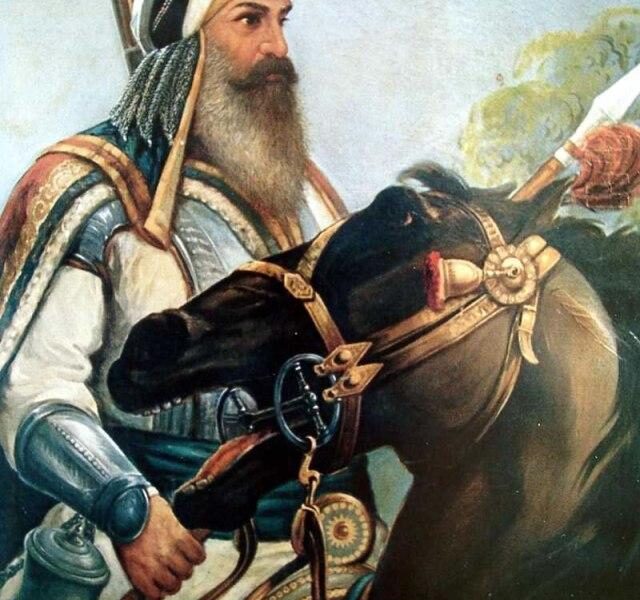Layla & Majnun is an old tale of Arab origin, about the 7th-century Bedouin poet Qays ibn al-Mulawwah and his lover Layla bint Mahdi (later signify as Layla al-Aamiriya).
The Layla-Majnun theme passed from Arabic to Persian, Turkish and Indian languages through the narrative poem composed in 1188/584 by the Persian poet Nizami Ganjavi, as the third chunk of his Khamsa. It is a famous poem praising their love tale.
Qays and Layla fell in love with each other when they were pretty young, but when they grew up Layla’s father didn’t permit them to be together. Qays became quite obsessed with her. His tribe Banu ‘Amir and the community had given him the epithet of Majnūn. Long before Nizami, the legend circulating in anecdotal format in Iranian akhbar. The earlier anecdotes and oral reported about Majnun are legal paper in Kitab al-Aghani and Ibn Qutaybah’s Al-Shi’r wa-l-Shu’ara’. The anecdotes are mostly very small, only loose way connected, and show tiny or no plot development. Nizami collected both mystical and secular sources about Majnun and portray a vivid image of the popular lovers. Subsequently, many other Persian poets copied him and had written their own versions of the romance. Nizami drew influence from Udhrite love poetry, which is characterized by erotic abandoned and attraction to the beloved, often by means of an unemptiable longing.
Many imitations have been contrived of Nizami’s work, some of which are earliest literary works in their own right, includes Amir Khusrow Dehlavi’s Majnun o Leyli and Jami’s version, complete in 1484, amounts to 3,860 couplets. Other notable reworkings are by Fuzûlî (died 1556), Maktabi Shirazi, Hatefi (died 1520), which became famous in India and Ottoman Turkey. Sir William Jones bring out Hatefi’s romanced in Calcutta in 1788. The popularity of the romance followes Nizami’s version is also obvious from the references to it in mystical masnavis and lyrical poetry—before the appearance of Nizami’s romance, there are just some reference to Majnun and Layla in divans. The variety and number of anecdotes about the lovers also get bigger considerably from a twelfth century onwards. Mystics contrived many tales about Majnun to adorned technical mystical concepts like self-sacrifice, fanaa (annihilation), divānagi (love-madness), etc. Nizami’s work has been translated into numerous languages. Arabic-language adaptations of the tale involve Shawqi’s play The Mad Lover of Layla.
Story
Qays ibn al-Mullawah had fell in love with Layla al-Aamiriya. He soon started composing poems about his love for her, mention her name often. His obsessive effort to woo the chik caused few locals to call him “Majnun.” When he asked for her hand in marriage, her father refused as it might be a scandal for Layla marrying someone considered mentally unbalanced. Soon after, Layla was forcibly married to another rich and noble merchant belong to the Thaqif tribe in Ta’if. He was reported as a handsome man with red complexion whose name was Ward Althaqafi. The Arabs called him Ward, denotes “rose” in Arabic.
When Majnun heard of her marriage, he fled the tribal camp and had began wander the surrounding desert. His family eventually had given up hope for his return and left meal for him in the wilderness. He could sometimes be seen reciting poetry to himself or pen up in a sand with a stick.
Layla is generally depicted as having moved to the place in a Northern Arabia with her guy, where she became ill and in due course died. In certain versions, Layla dies of heartbreak from not being able to see her beloved. Majnun was later found dead in wilderness in 688 AD, near Layla’s grave. He had carved three poetry verses on rock near a grave, which are last three verses attributed to him.
It is a tragic tale of undying love much like the later Juliet and Romeo. This type of love and care is defined as “virgin love” as the lovers never married or consummate their passion. Other famous virgin love stories set in Arabia are the tales of Lubna and Qays, Kuthair and Azza, Al Majnoun Al Faransi and Marwa, and Abla and Antara. This literary motif is common throughout the nation, notably in the Muslim literature of South Asia, like Urdu ghazals.
Location
It is faith from Bedouin oral tradition that Layla and Qays were born in what is now the province of Al-Aflaj in Saudi Arabia, and where the city of “Layla” has survived.
Jabal Al-Toubad ( is situated in the town of Al-Aflaj, 350 km southwest of the town of Riyadh in Saudi Arabia. Jabbar is situated near the village of Al-Ghayl, in the center of Wadi Al-Mughal. This hill witnessed the love tale of Qais bin al-Mulawwah and his blood Laila al-Amiriya, in the 65th year of the Hijri (685 AD) during a sovereignty of a Umayyad caliph Abd al-Malik bin Marwan.
The Persian poet Nasir Khusraw visited the city of Layla in 5th century AH (1009 CE – 1106 CE) and described the city accurately along with the hill Jabal Al-Toubad, and complicated on the misery that it had turned into as he had spent a few months there. The region was overwhelming by poverty, insecurity and internal strife.








